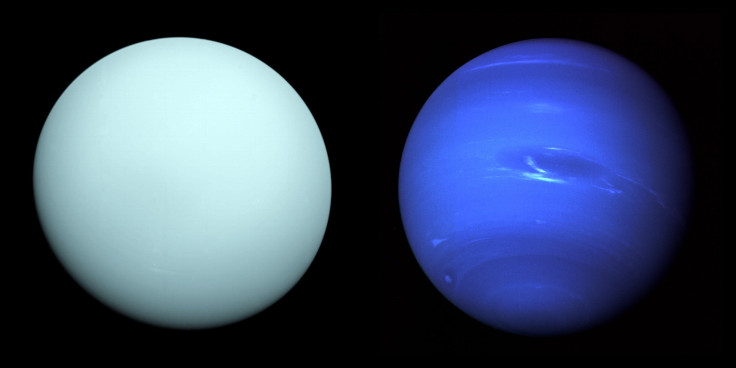Blue Ice Giants: Scientists Finally Find Why Neptune Is Bluer Than Uranus
KEY POINTS
- The layer of haze in the planets' atmospheres may explain why Uranus is lighter
- Its "sluggish" atmosphere is less capable of "churning out" the haze, making it lighter
- The new model is "the first to explain the difference in visible color between Uranus and Neptune"
Uranus and Neptune are very similar planets, but why are they different shades of blue? A new study has found that a layer of haze may be behind the ice giants' difference in coloration.
Uranus and Neptune are the seventh and eighth planets in our solar system respectively and both are considered to be ice giants. They also have similar masses, sizes and atmospheric conditions, the University of Oxford noted in a news release.
Another thing that's similar is that they are both blue. Despite all these similarities, Uranus and Neptune still come in different shades of blue, with the former having the lighter shade between the two. Methane is what gives Uranus and Neptune their blue hue, according to NASA. However, despite having the lighter hue, Uranus actually has more methane, reported Space.com.
For the new study, published in the Journal of Geophysical Research: Planets, an international team of researchers developed a model to have a closer look at the aerosol layers in the planets at different wavelengths. Previous studies had only looked at "individual, narrow" wavelengths.
The researchers used observations from the Hubble Space Telescope, the Gemini North Telescope and the NASA Infrared Telescope Facility to develop "a single aerosol model that matches the observations at all wavelengths simultaneously for both planets."
The model describes three layers of aerosols on both planets' atmospheres, and it's actually the middle layer that spells the difference between the two planets. They found that this layer is thicker on Uranus, accounting for the difference in the color that we see as its thickness "whitens" the planet's appearance, NOIRLab noted in a news release. In fact, without this haze in the planets' atmospheres, they would look "almost equally blue."
Why are Uranus and Neptune different colors? Astronomers using @GeminiObs @NASAHubble and NASA IRTF (@UHIfA) help explain, revealing that excess haze on Uranus makes it paler than Neptune. Read more: https://t.co/eGqOTOiImH.
— NOIRLab (@NOIRLabAstro) May 31, 2022
Image credit: NASA/JPL-Caltech/B. Jónsson pic.twitter.com/PEuo1rIRJ3
It's possible that methane ice condenses in this layer on both planets, forming a "shower of methane snow." However, since Neptune has a more active atmosphere, it's capable of churning up the methane particles into haze to produce snow, thereby keeping the haze thinner and its color bluer. Uranus, on the other hand, has a more "sluggish" atmosphere, so the haze tends to build up, and its blue color appears more muted.
"This is the first model to simultaneously fit observations of reflected sunlight from ultraviolet to near-infrared wavelengths," study lead author, Patrick Irwin of the University of Oxford, explained. "It's also the first to explain the difference in visible color between Uranus and Neptune."
"We hoped that developing this model would help us understand clouds and hazes in the ice giant atmospheres," astronomer Mike Wong of the University of California, Berkeley, who is also one of the authors of the study, said in the news releases. "Explaining the difference in color between Uranus and Neptune was an unexpected bonus!"
In the future, scientists could learn even more about these ice giants. Just last April, a report from the National Academies of Sciences, Engineering and Medicine noted that the Uranus Orbiter and Probe (UOB) mission should be the "highest priority large mission."

© Copyright IBTimes 2024. All rights reserved.






















